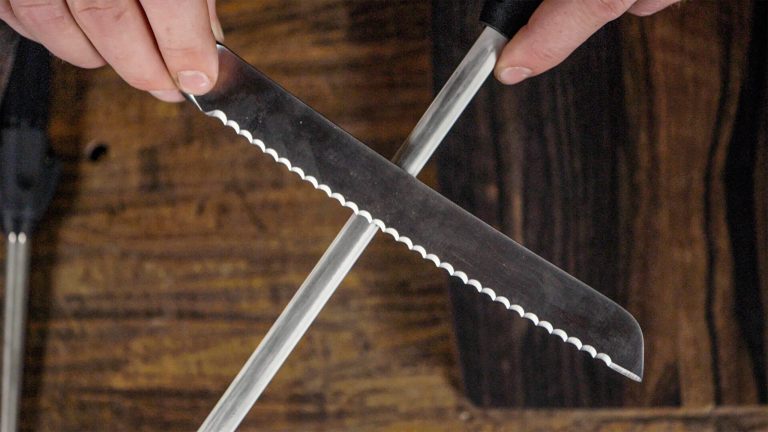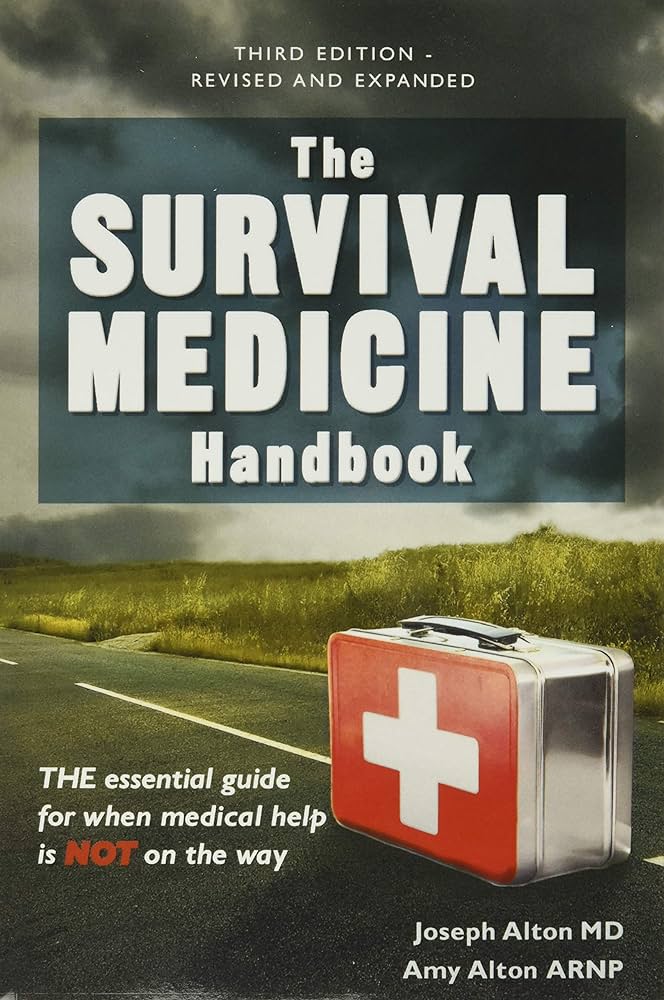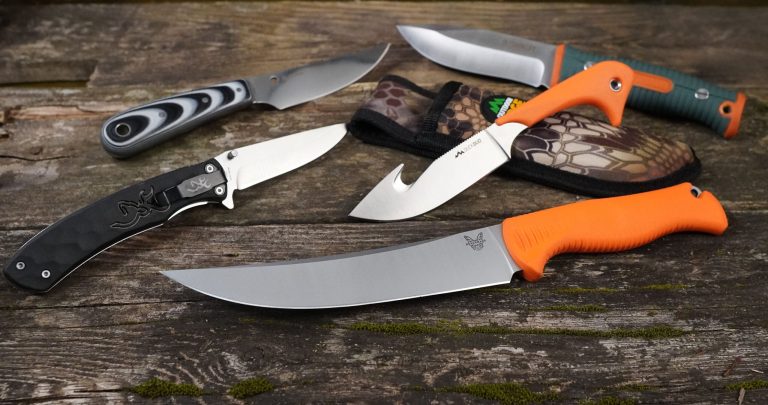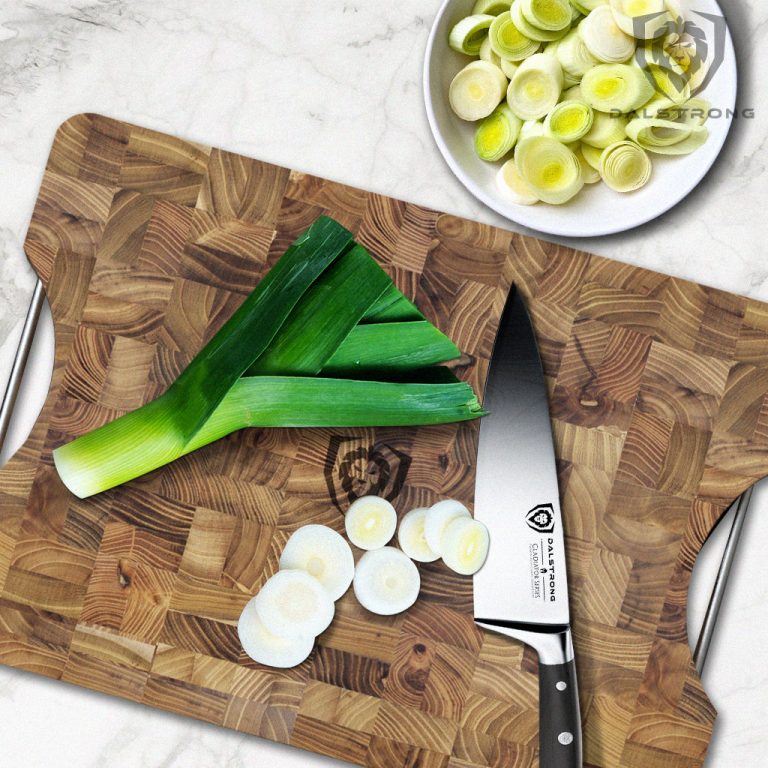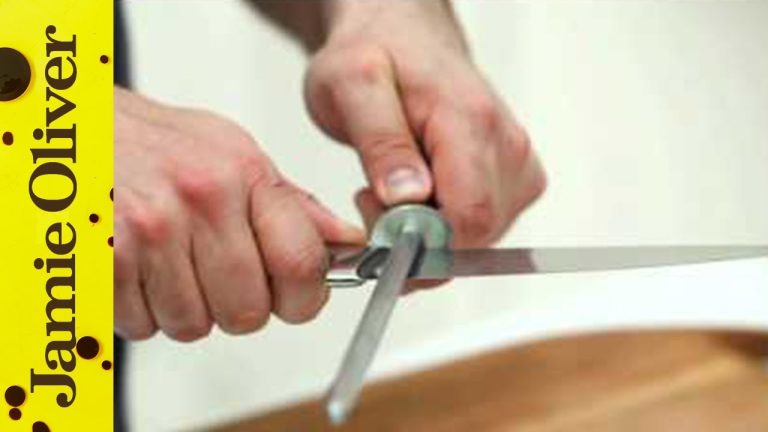Parts of a Kitchen Knife: Unlocking the Secrets to Blade Anatomy
The parts of a kitchen knife include the blade, handle, bolster, and tang, which are essential for optimal performance and safety. A kitchen knife is an indispensable tool in any culinary setting.
From dicing vegetables to carving meat, its versatile uses make it a must-have in every kitchen. However, understanding the different parts of a kitchen knife is crucial to choosing the right one for your needs. Learning about the blade, handle, bolster, and tang will not only enhance your knife skills but also ensure safety while handling sharp blades.
We will explore each of these components in detail, helping you make an informed decision when selecting a kitchen knife. So, let’s dive in and discover the anatomy of a kitchen knife.
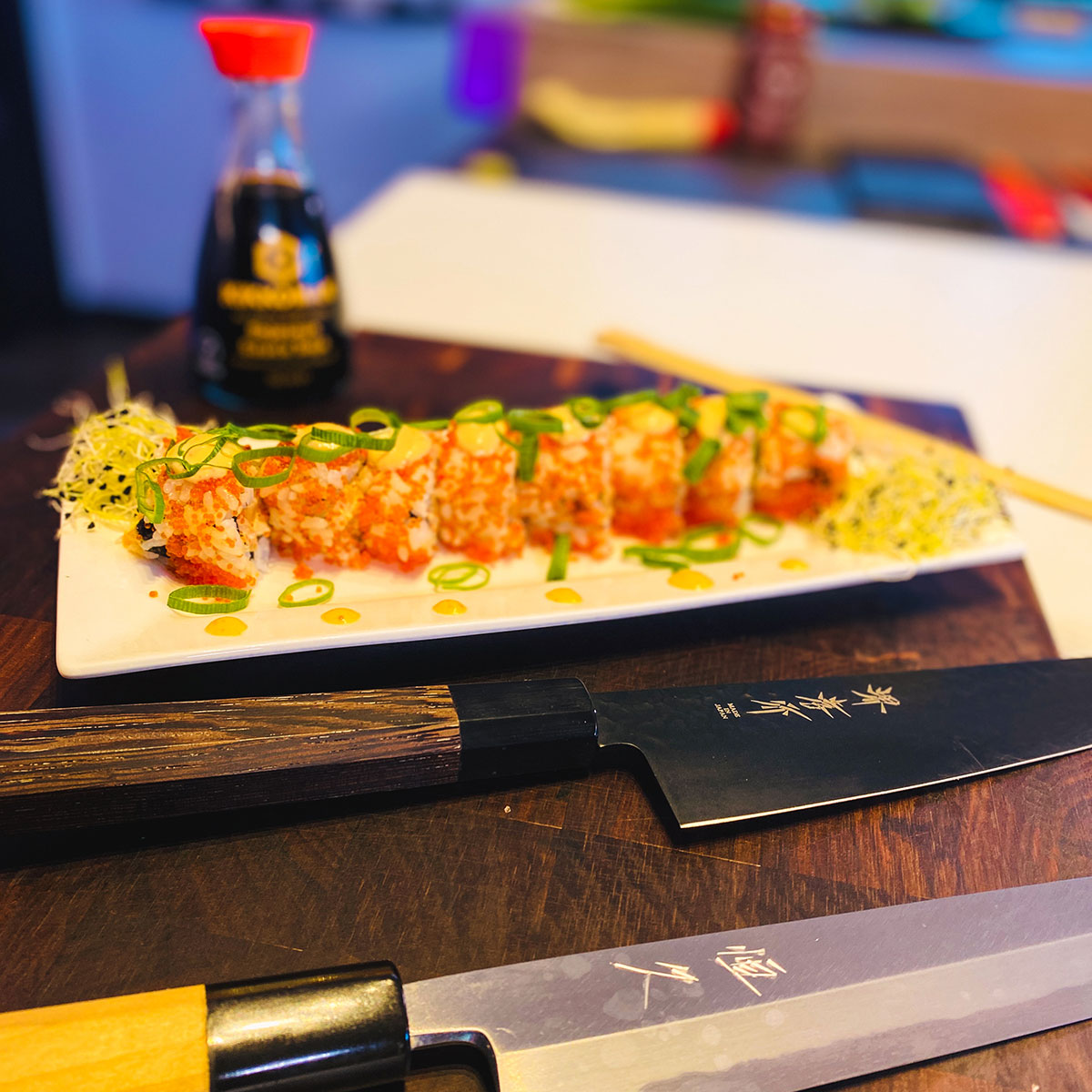
Credit: schoolofsushi.com
The Blade
When it comes to kitchen knives, the blade is the most crucial component. The composition of a knife blade can vary, with different materials offering distinct advantages. Some common blade materials include stainless steel, carbon steel, and high-carbon stainless steel. Each material has its unique properties, such as corrosion resistance, durability, and edge retention.
Understanding the importance of blade hardness is key to selecting the right kitchen knife. Hardness is measured on the Rockwell Scale, with higher numbers indicating a harder blade. A harder blade tends to retain its sharpness longer but may be more brittle. On the other hand, a softer blade is more flexible but may require more frequent sharpening.
Blade thickness also plays a role in a knife’s performance. Thicker blades offer more durability and can handle heavier tasks, but they may sacrifice some cutting ability. Thinner blades, on the other hand, excel in slicing and precision tasks but may be more prone to damage.
Blade geometry is another factor that influences a knife’s cutting ability. Different blade shapes, such as straight, curved, or serrated, have varying strengths and weaknesses. A well-designed blade geometry ensures efficient cutting, whether it’s for chopping, slicing, or delicate tasks.
The Edge
A kitchen knife is comprised of several important parts that work together to create an efficient and effective cutting tool. One of the most crucial components is the edge, which determines the knife’s cutting ability. When it comes to the edge, there are different types of knife edges to consider.
Firstly, understanding edge retention is key. This refers to how long the sharpness of the edge can be maintained. Different knife materials and manufacturing techniques can impact edge retention.
Sharpening angles also play a role in the edge’s performance. The angle at which the blade is sharpened affects its cutting efficiency. Choosing the right sharpening angle can optimize the knife’s cutting ability.
In addition, a serrated edge provides unique benefits. Serrated knives have small, jagged edges that enable them to grip and cut through tough materials, like bread or tomatoes, with ease.
Lastly, the double bevel plays a significant role in the edge configuration. A double bevel refers to a knife with two angled edges on either side, creating a V-shape. This allows for precision cutting and versatility.
The Tang And Handle
The tang is an essential part of every kitchen knife. It refers to the portion of the blade that extends into the handle. Understanding the anatomy of the tang is crucial when it comes to selecting the right knife for your needs.
There are different types of tangs, including the full tang, partial tang, and hidden tang. The full tang is a single piece of metal that extends the entire length of the handle. It provides the utmost durability and balance, making it highly preferred by professional chefs.
A full tang knife offers numerous benefits. It ensures the knife remains sturdy and less prone to breakage, even when subjected to heavy use. Additionally, a full tang provides better control and balance, allowing for precise and effortless cutting motions.
The handle material is also important in determining the quality and longevity of a kitchen knife. Common handle materials include wood, plastic, and stainless steel. Each material has its own unique characteristics and advantages, so it’s essential to consider factors such as grip, comfort, and durability when making a choice.
The ergonomics of a knife handle is vital for a comfortable grip. A well-designed handle should fit comfortably in your hand, providing a secure and firm grip to avoid accidents during food preparation. Ensuring a comfortable grip is crucial for minimizing hand fatigue and improving overall kitchen efficiency.
The Bolster And Butt
| The Bolster and Butt |
The bolster is an integral part of a kitchen knife, serving multiple functions. It acts as a barrier between the handle and the blade, providing stability and balance. It helps in preventing accidents by offering protection to your fingers, enhancing the grip, and allowing for precise control during chopping, slicing, and dicing. The design of the bolster varies, with some knives having a full bolster that extends to the blade’s heel, while others may feature a partial bolster. The type of bolster can impact the knife’s weight, balance, and maneuverability.
The butt of a kitchen knife also plays a role in achieving optimal balance and weight distribution. It is the end opposite to the blade and contributes to the overall feel and comfort of the knife. A well-designed butt can provide added stability, reducing the risk of hand fatigue. When selecting a knife, consider the practical aspects of the bolster, such as its design, weight, and comfort, to ensure it meets your specific cooking needs. Additionally, advancements in bolster technology have resulted in enhancements that offer increased stability and durability, catering to the demands of professional and home chefs alike.
The Spine And Heel
The Spine and Heel
The spine and heel of a kitchen knife play important roles in its functionality and design. The spine, which runs along the top edge of the blade, serves multiple purposes. One significant aspect of the spine is its **thickness variations**, which can affect the overall weight and balance of the knife. Thicker spines provide durability and strength for heavy-duty tasks, while thinner spines offer more precision and control for intricate cutting.
The heel, located at the base of the blade near the handle, is primarily used for **chopping and slicing**. Its broad and sturdy design allows for forceful chopping motions, making it ideal for tough ingredients like meats and root vegetables. Some kitchen knives feature **comfort and safety** enhancements on the heel, such as a curved or contoured shape, which provides a more ergonomic grip.
In addition to their standard features, the spine and heel of a kitchen knife can also be customized. Manufacturers offer various options for blade designs, **allowing for personalization** based on individual preferences. Whether you prioritize functionality, aesthetics, or a combination of both, there are choices to suit every chef’s needs.
The Point And Tip
| Different types of blade points | Applications and benefits of each point type |
| Clip Point | Excellent for making precise cuts and piercing tasks. Offers good control and agility. |
| Drop Point | Provides a strong and versatile point, ideal for slicing, hunting, and general-purpose tasks. |
| Tanto Point | Known for its strength and durability. Suitable for tough tasks and tactical use. |
| Spear Point | Offers a sharp and symmetric point, perfect for precision tasks and self-defense purposes. |
The sharpness of the blade’s tip is crucial for various kitchen tasks. A sharp tip enables cleaner and more controlled cuts. It is particularly important when working with delicate ingredients or performing intricate tasks like deveining shrimp or segmenting fruit. *Proper care and maintenance* of the point and tip are essential to maintain their sharpness and functionality over time. *Regular sharpening* and *using a honing rod* can keep the tip in optimal condition.
Each knife point design serves specific purposes. Whether you require precision, durability, or versatility, understanding the different types of blade points will help you make an informed choice when selecting a kitchen knife. By considering the point’s attributes and the tasks you frequently undertake, you can enhance your culinary experience and achieve better results.
The Handle Design
The handle design is an important aspect of a kitchen knife. Different types of handle designs are available to cater to various needs and preferences. One key factor to consider is the non-slip properties of the handle, which ensures secure and safe handling during use. Additionally, balance and maneuverability play a significant role in the overall performance of a knife. Various factors, such as the weight distribution and shape of the handle, can impact these aspects.
Handle length and grip styles also contribute to the comfort and control of a knife. Longer handles provide better leverage, while different grip styles, such as the traditional Western grip or the pinch grip, offer distinct advantages for different cutting techniques.
Furthermore, the handle can also be personalized to suit individual preferences. From the use of different materials like wood, plastic, or composite materials, to various embellishments and textures, there are numerous options available to customize the handle of a kitchen knife.
Knife Construction And Quality
A well-constructed kitchen knife is essential for efficient and enjoyable cooking. When evaluating knife quality, it’s important to examine the overall knife construction. Craftsmanship plays a significant role in determining the durability of the knife. Look for signs of precision and attention to detail, such as smooth edges, seamless joints, and balanced weight distribution. Investing in a reliable, high-quality kitchen knife is a wise decision as it not only enhances your culinary experience but also ensures long-lasting performance. Consider factors such as the material used for the blade and handle, as well as the manufacturing process. By carefully evaluating the construction and quality of a kitchen knife, you can make an informed decision and choose a knife that meets your needs and preferences.
Accessories And Care
| Essential knife accessories for storage and protection | Honing and sharpening tools for blade maintenance | Proper cleaning techniques for longevity | Safe storage practices to prevent damage | Sharpening and maintenance schedules for optimal performance |
|---|---|---|---|---|
| Investing in knife guards and blade covers is crucial to protect the edges from damage while in storage. These accessories act as a barrier against accidental cuts and prevent the accumulation of dirt and moisture. | To maintain the sharpness and functionality of your kitchen knife, a honing rod is necessary for regular maintenance. This tool helps realign the blade and improves cutting performance. For a more precise edge, you can also use a sharpening stone or an electric knife sharpener. | Cleaning your kitchen knife properly after each use is essential to ensure its longevity. Remember to always hand wash the knife with mild soap and warm water. Avoid harsh abrasives or the dishwasher, as they can damage the blade’s materials. | When storing your knives, it’s important to keep them in a knife block or a magnetic strip to prevent accidents and keep the blades protected. Avoid storing them loose in drawers where they can get damaged or cause injuries. | Establishing a regular sharpening and maintenance schedule is crucial for the optimal performance of your kitchen knife. Depending on usage, it is recommended to sharpen the blade every 3-6 months. Additionally, make sure to inspect the knife for any signs of wear or damage regularly. |
Conclusion
A well-crafted kitchen knife is essential to every cook’s arsenal. Understanding the different parts of a kitchen knife can help you make an informed choice when purchasing one. The blade is the most important part of a knife, with its length, width, and sharpness crucial for various tasks.
The handle plays a vital role in providing grip and control, ensuring safe and comfortable use. The bolster provides balance and stability, while the tang, whether full or partial, determines the knife’s durability and strength. In addition, the spine offers support and strength during cutting motions.
Maintaining the knife’s sharp edge is essential for optimal performance, so regularly sharpening and honing the blade is essential. By familiarizing yourself with these various parts and their functions, you can choose the perfect kitchen knife that suits your needs, making your culinary experiences safer and more enjoyable.

